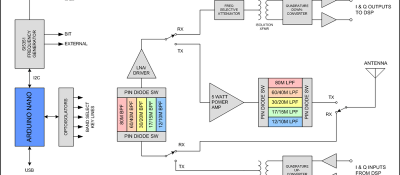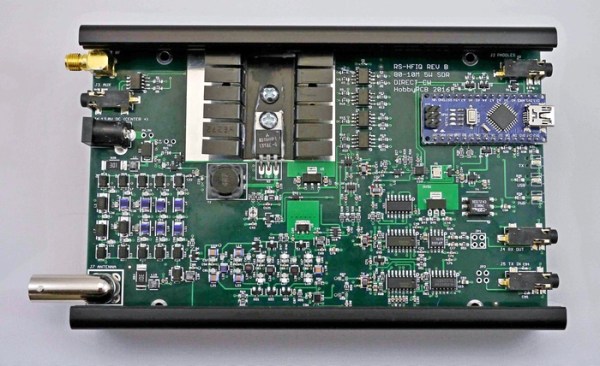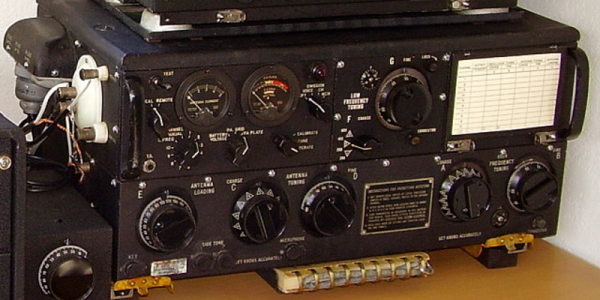The availability of cheap SDR hardware created a flourishing ecosystem for SDR software, but a lot of the hardware driving the revolution was still “cheap”. In the last few years, we’ve seen quality gear replacing the TV dongles in many setups, and down-converters designed for them to allow them to work on the ham bands.
But something that’s purpose-built might be a better option if ham radio, particularly the shortwave portion thereof, is your goal. First off, you might want to transmit, which none of the TV dongles allow. Then, you might want a bit of power. Finally, if you’re serious about short-wave, you care more about the audio quality than you do immense bandwidth, so you’re going to want some good filters on the receiving end to help you pull the signal out of all the noise.
 The RS-HFIQ 5 W SDR transceiver might be for you. It’s up on Kickstarter right now, and it’s worth looking at if you want a fully open source (schematics, firmware, and software) shortwave SDR rig. It’s also compatible with various open frontends.
The RS-HFIQ 5 W SDR transceiver might be for you. It’s up on Kickstarter right now, and it’s worth looking at if you want a fully open source (schematics, firmware, and software) shortwave SDR rig. It’s also compatible with various open frontends.
The single-board radio isn’t really a full SDR in our mind — it demodulates the radio signal and sends a 96 kHz IQ signal across to your computer’s soundcard where it gets sampled and fully decoded. The advantage of this is that purpose-built audio rate DACs have comparatively high resolution for the money, but the disadvantage is that you’re limited to 96 kHz of spectrum into the computer. That’s great for voice and code transmissions, but won’t cut it for high-bandwidth data or frequency hopping applications. But that’s a reasonable design tradeoff for a shortwave.
Still, an SDR like this is a far cry from how simple a shortwave radio can be. But if you’re looking to build up your own SDR-based shortwave setup, and you’d like to hack on the controls more than on the radio itself, this looks like a good start.

















